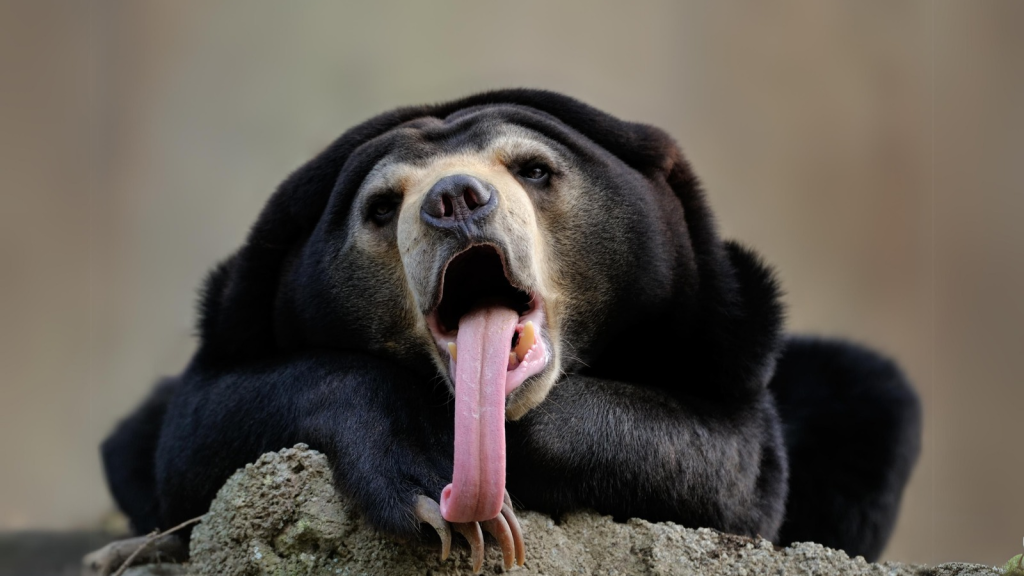Hidden in the lush forests of Southeast Asia, the sun bear remains one of the least known bear species. These small, charismatic creatures are full of surprises, from their incredibly long tongues to their tree-climbing prowess. Despite their name, sun bears are largely nocturnal, emerging under the cover of darkness to forage and explore. As the smallest of all bear species, they pack a lot of personality into a compact frame. Let’s uncover some fascinating facts about these remarkable animals that might just make the sun bear your new favourite member of the bear family. Found in countries like Malaysia, Indonesia, and Thailand, these bears play a vital role in maintaining the health of tropical forests.
A Tongue to Remember
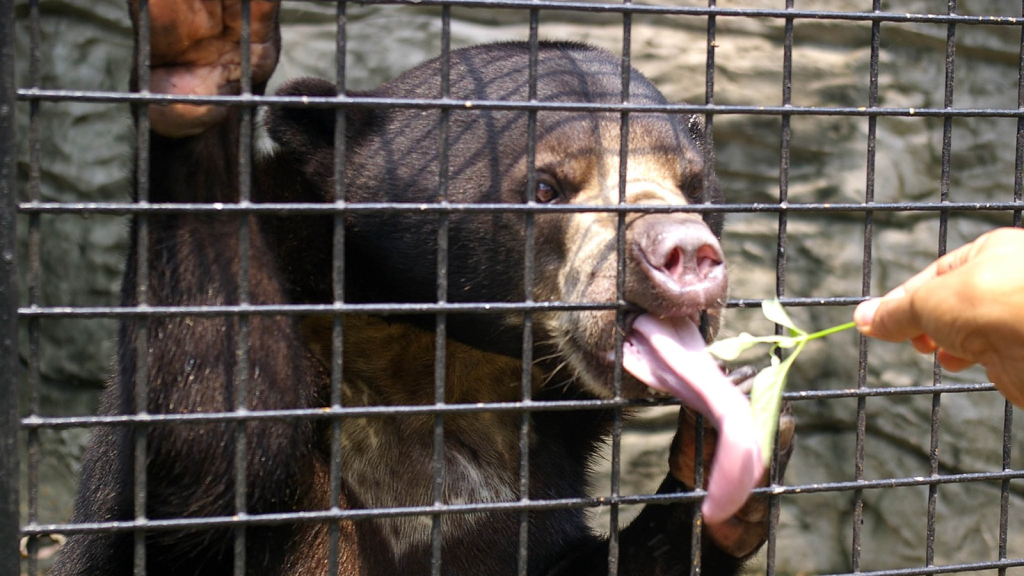
The sun bear boasts the longest tongue of any bear species, measuring up to 25 centimetres. This extraordinary appendage is perfect for reaching deep into beehives and termite mounds to extract tasty treats. Their long tongue also helps them lap up honey from tree cavities, earning them the nickname ‘honey bear’. This remarkable adaptation allows sun bears to access food sources that other animals simply can’t reach. The sun bear’s tongue is so specialised that it can extend into crevices as narrow as 1 centimetre wide.
Pint-Sized Bears
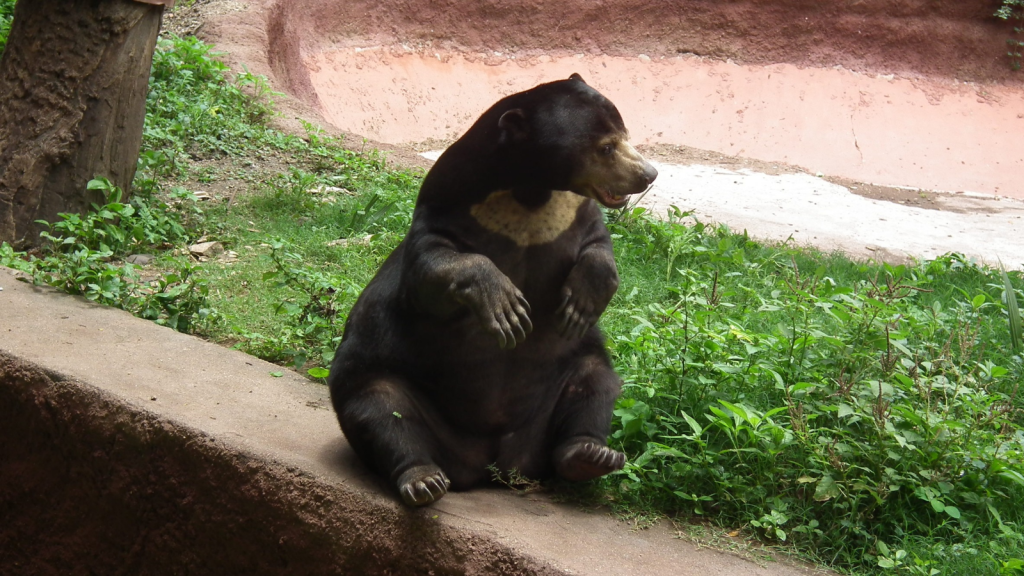
Sun bears hold the title of the world’s smallest bear species. Adult males typically weigh between 30 to 70 kilograms, while females are even smaller. To put this into perspective, they’re about the size of a large dog. Their petite stature allows them to navigate dense forests with ease, scampering up trees and squeezing into tight spaces in search of food. Despite their small size, sun bears are incredibly strong, capable of tearing open termite mounds and fallen logs with their powerful claws.
Masters of the Trees
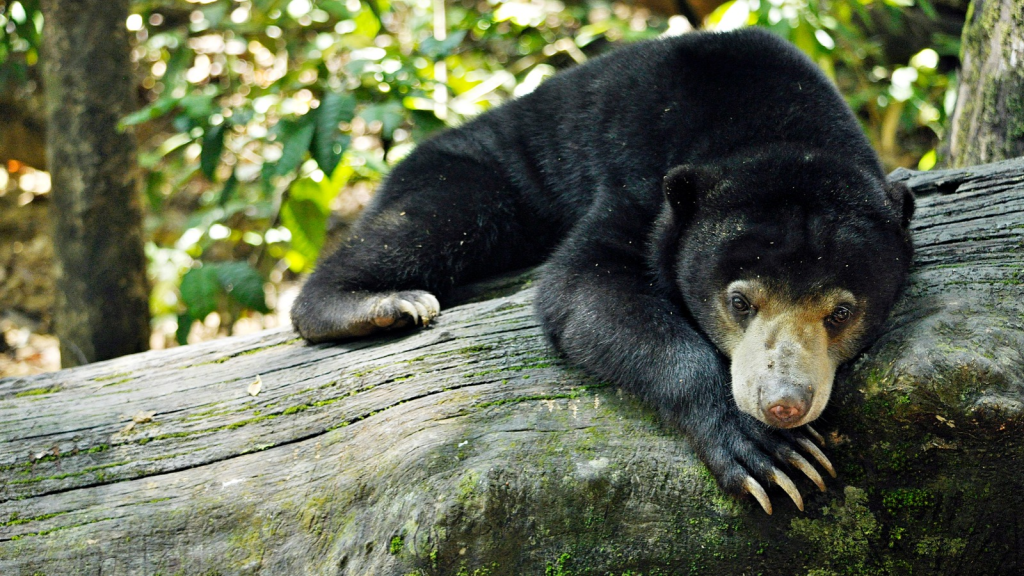
Despite their stocky build, sun bears are excellent climbers. They have large, curved claws that act like built-in climbing gear, allowing them to scale trees with impressive speed and agility. Sun bears often construct nests high up in the canopy, using them for resting and sleeping. Their arboreal skills help them escape predators and access a wider range of food sources. These bears can climb as high as 60 metres into the forest canopy, making them true masters of the treetops.
A Unique Chest Patch
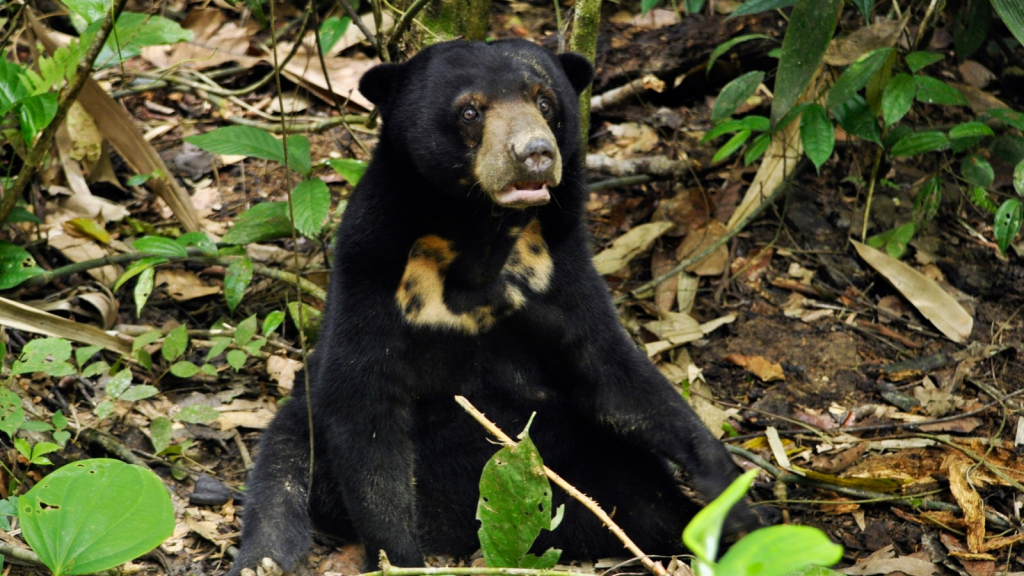
Every sun bear sports a distinctive U-shaped patch on its chest, typically pale orange or cream in colour. Like human fingerprints, each bear’s chest patch is unique, making it possible for researchers to identify individuals in the wild. Local legends suggest that this marking represents the rising sun, which is how the species got its name. The chest patch also serves as a visual signal to other sun bears, potentially communicating information about age, health, or reproductive status.
Nocturnal Nomads
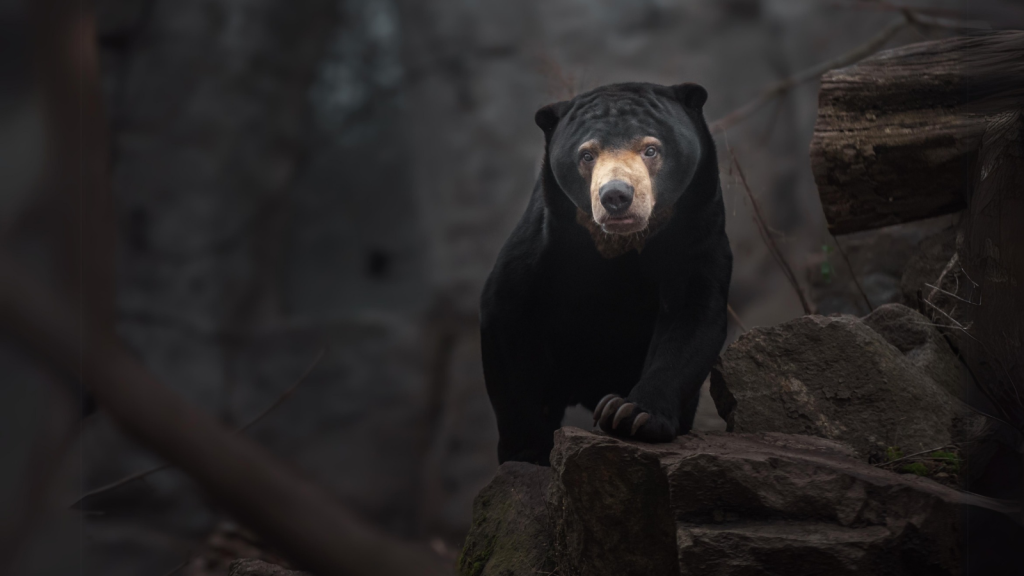
Contrary to what their name might suggest, sun bears are primarily active at night. They spend their evenings foraging for food, covering large distances in search of their next meal. During the day, they often retreat to tree nests or ground-level day beds to rest. This nocturnal lifestyle helps them avoid the intense heat of the tropical forests they call home. Sun bears have excellent night vision, with eyes adapted to low-light conditions, allowing them to navigate the forest floor and treetops with ease in the dark.
Omnivorous Opportunists
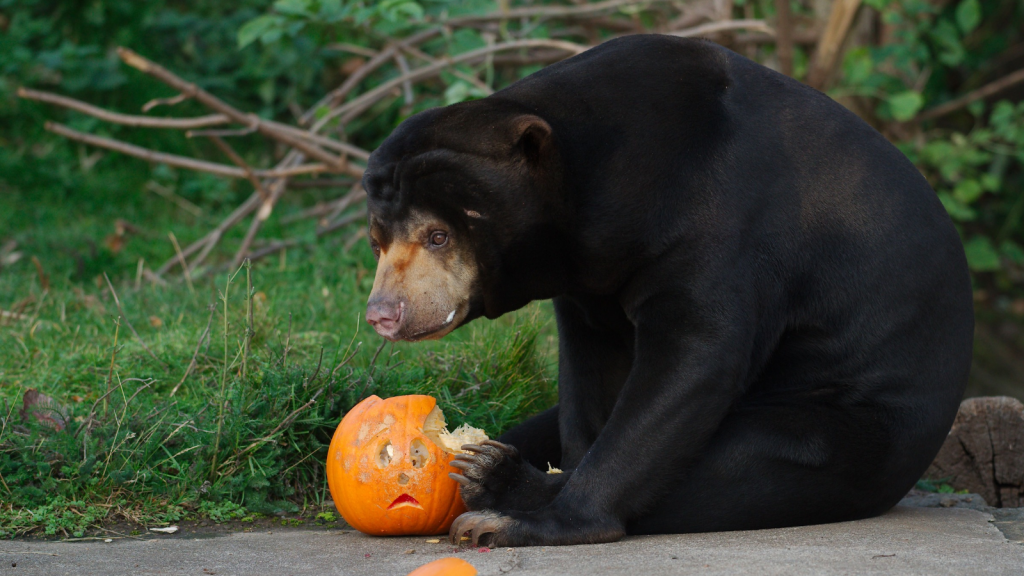
Sun bears have a diverse diet that includes fruits, insects, small vertebrates, and even bird eggs. Their favourite food is honey, which they extract from beehives using their long claws and even longer tongue. They’re not picky eaters and will happily munch on termites, earthworms, and various plant matter. This adaptable diet helps them survive in changing environments. Sun bears also play a crucial role in pest control, consuming large quantities of potentially destructive insects like termites and beetle larvae.
A Solitary Life
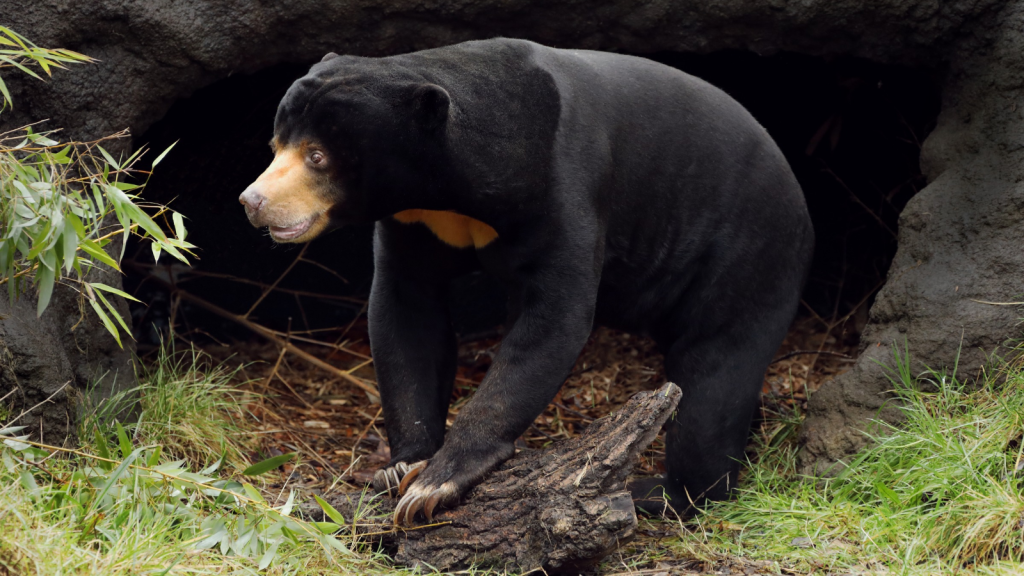
Unlike some bear species that gather in groups, sun bears are generally solitary creatures. They only come together during mating season or when a mother is raising her cubs. Adult sun bears maintain large home ranges, which they mark with claw marks and scent to ward off other bears. This solitary lifestyle helps reduce competition for resources in their forest habitats. Male sun bears have been known to roam over territories as large as 15 square kilometres, while females typically occupy smaller areas.
Powerful Sense of Smell

Sun bears have an incredibly keen sense of smell, which they use to locate food and detect potential threats. Their nose is so sensitive that they can smell bee larvae inside a tree trunk from several metres away. This powerful olfactory ability is crucial for their survival, helping them find food and avoid danger in the dense forests they inhabit. Their sense of smell is estimated to be about 2,100 times more acute than that of humans.
Unusual Reproductive Cycle
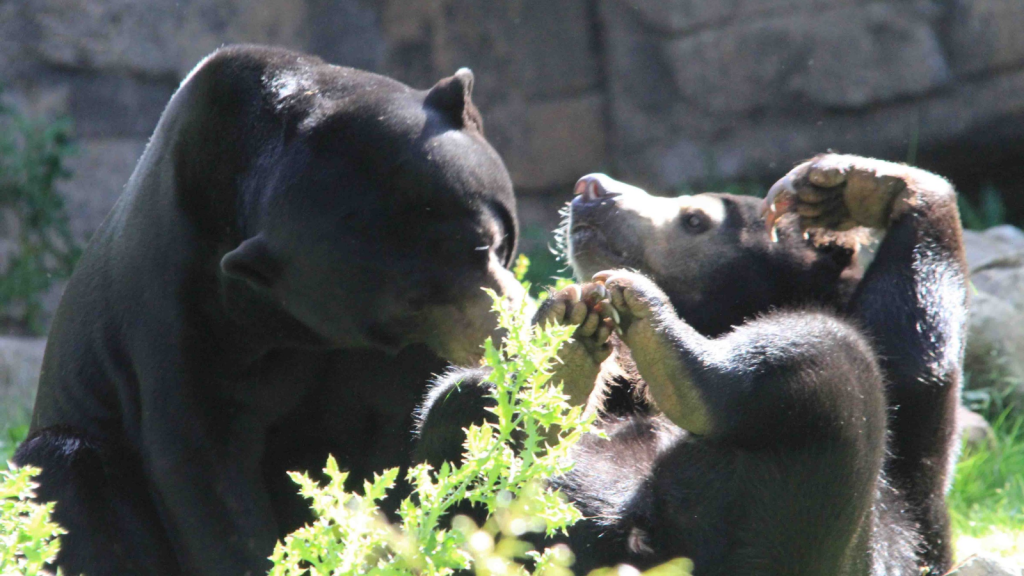
Female sun bears have a unique reproductive adaptation called delayed implantation. After mating, the fertilised egg doesn’t immediately implant in the uterus. Instead, it remains dormant until environmental conditions are favourable for raising cubs. This allows the mother to time the birth when food is plentiful, giving her cubs the best chance of survival. The gestation period, including delayed implantation, can last anywhere from 95 to 240 days.
Threat of Extinction
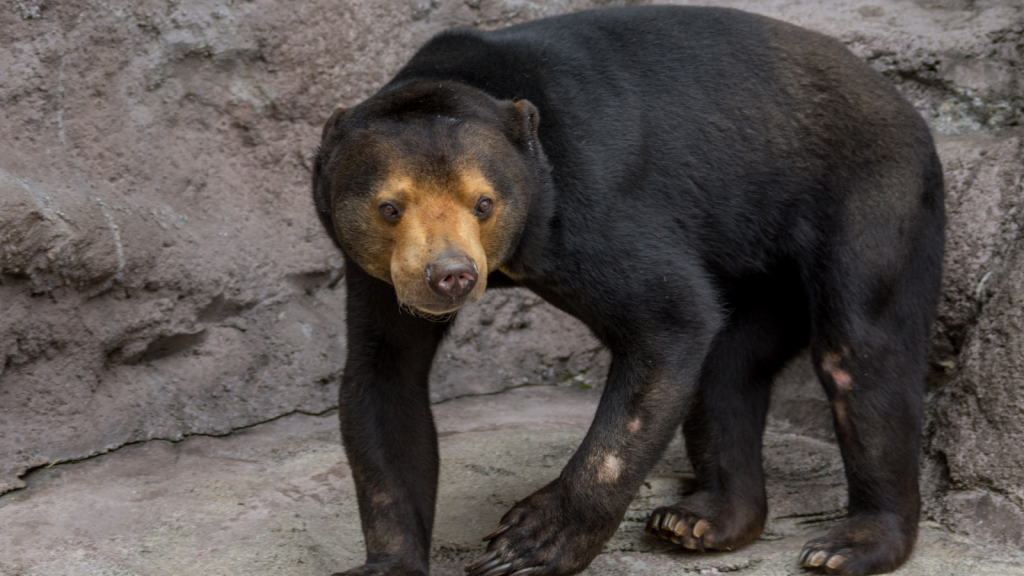
Sadly, sun bears are classified as vulnerable to extinction by the International Union for Conservation of Nature (IUCN). Their population has declined by more than 30% in the past 30 years due to habitat loss, poaching, and the illegal wildlife trade. Conservation efforts are crucial to ensure these fascinating bears don’t disappear from our planet. It’s estimated that there are fewer than 1,000 sun bears left in the wild, making them one of the rarest bear species in the world.
Barefoot Bears
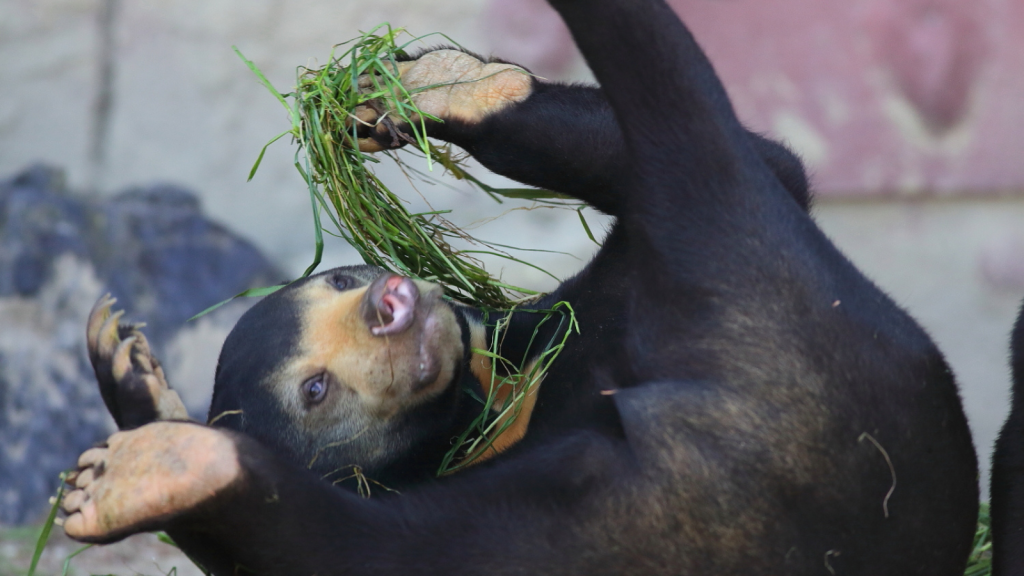
Unlike many other bear species, sun bears have hairless soles on their paws. This unique feature gives them better grip when climbing trees and helps them feel around for insect nests. Their bare soles are also equipped with extra-long claws, perfect for tearing into termite mounds or prying open beehives. The sun bear’s front claws can grow up to 10 centimetres long, making them proportionally the longest claws of any bear species.
Natural Forest Gardeners
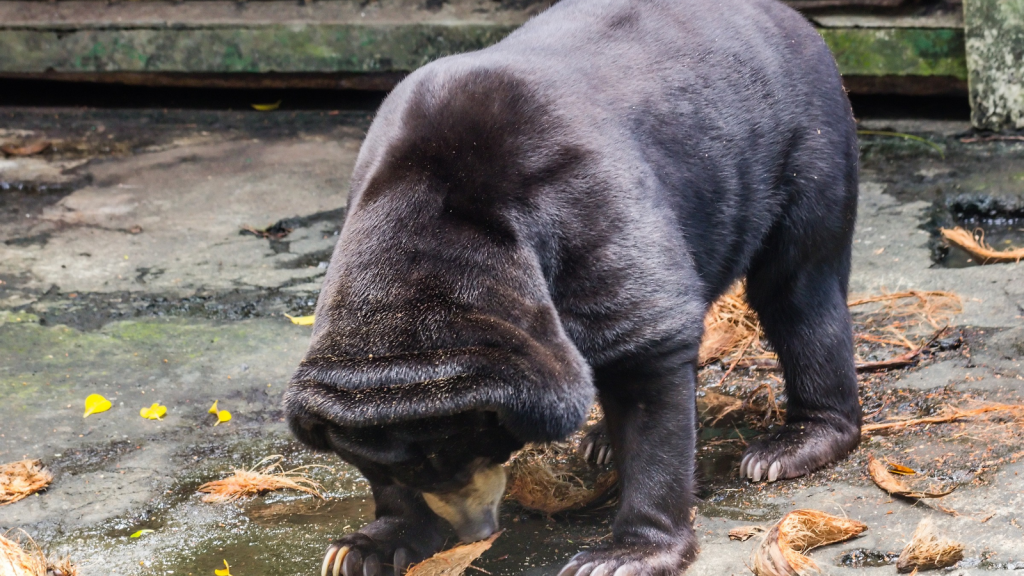
Sun bears play a crucial role in forest ecosystems as seed dispersers. As they roam through the forest eating fruits, they spread seeds through their droppings. This helps maintain forest diversity and supports the growth of new trees. Their habit of digging for insects also aerates the soil, benefiting plant growth. A single sun bear can disperse thousands of seeds in a day, making them vital contributors to forest regeneration.
Talented Swimmers
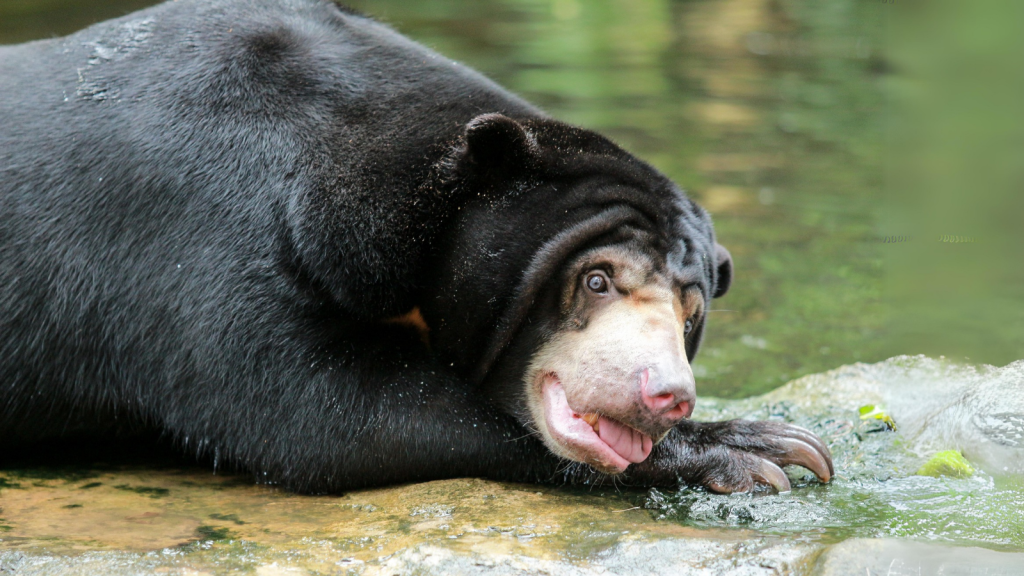
Despite their forest-dwelling nature, sun bears are accomplished swimmers. They can easily cross rivers and even venture into mangrove swamps in search of food. Their swimming abilities also come in handy during the rainy season when parts of their habitat may become flooded. Sun bears have been observed swimming for distances of up to 1 kilometre in search of new foraging grounds or to escape threats.
Expressive Faces
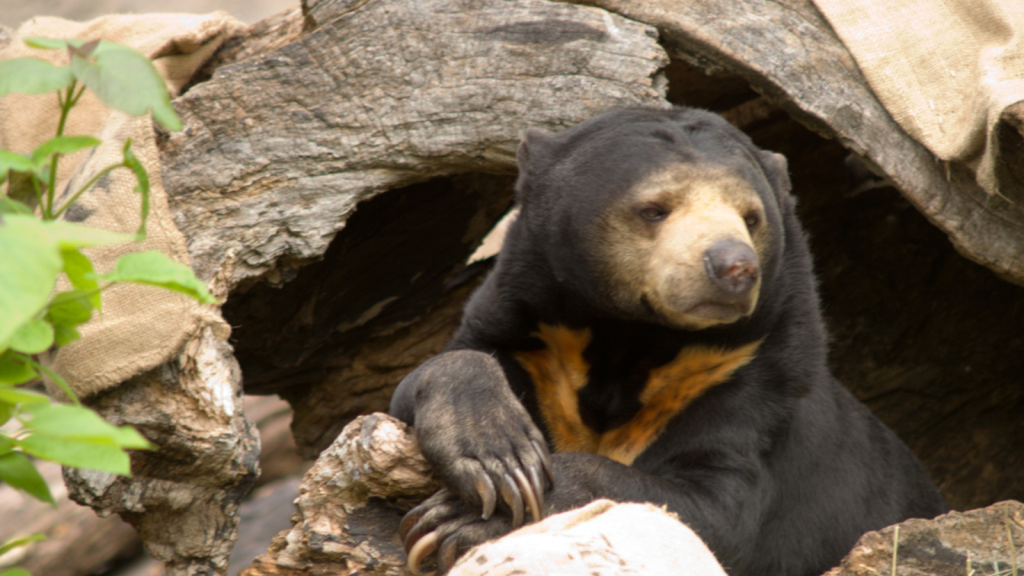
Sun bears have highly mobile lips and tongues, giving them an unusually expressive face for a bear. They can curl their upper lip, stick out their tongue, and make a variety of facial expressions. These expressions are often used in communication with other bears, particularly between mothers and cubs. Sun bears also have a unique vocalization repertoire, including grunts, roars, and a high-pitched call that sounds like a chicken clucking.
Remarkable Dental Adaptations
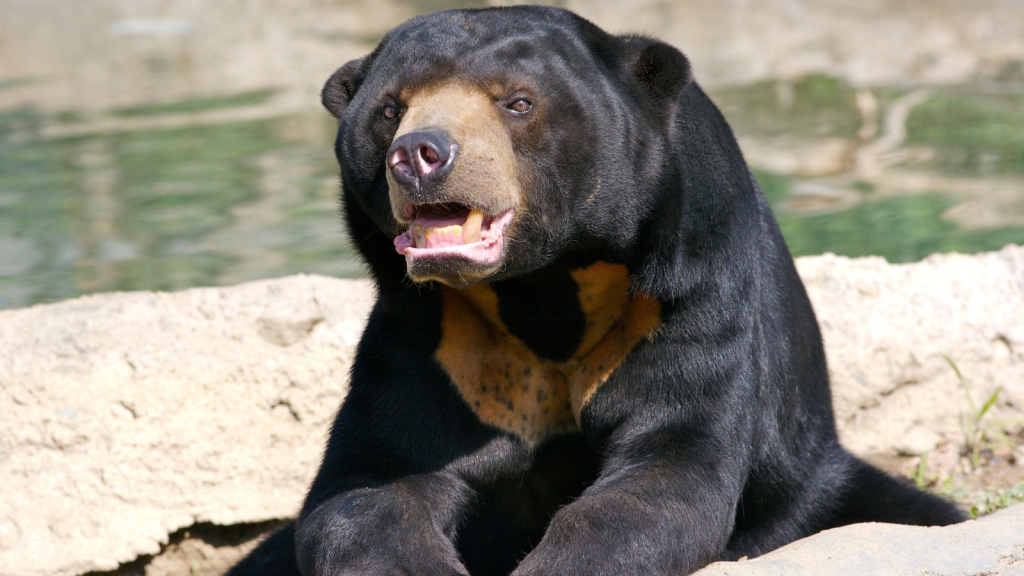
Sun bears possess unique dental features that set them apart from other bear species. Their molars are flatter and smoother than those of their relatives, an adaptation that helps them process their varied diet of fruits, insects, and honey. This dental structure allows them to efficiently crush and grind both soft fruits and tough insect exoskeletons. Interestingly, sun bears have relatively small canine teeth compared to other bears, which may be a result of their less predatory lifestyle. Their specialised teeth, combined with their long tongue and strong jaws, make them incredibly efficient foragers in their tropical forest habitat.

